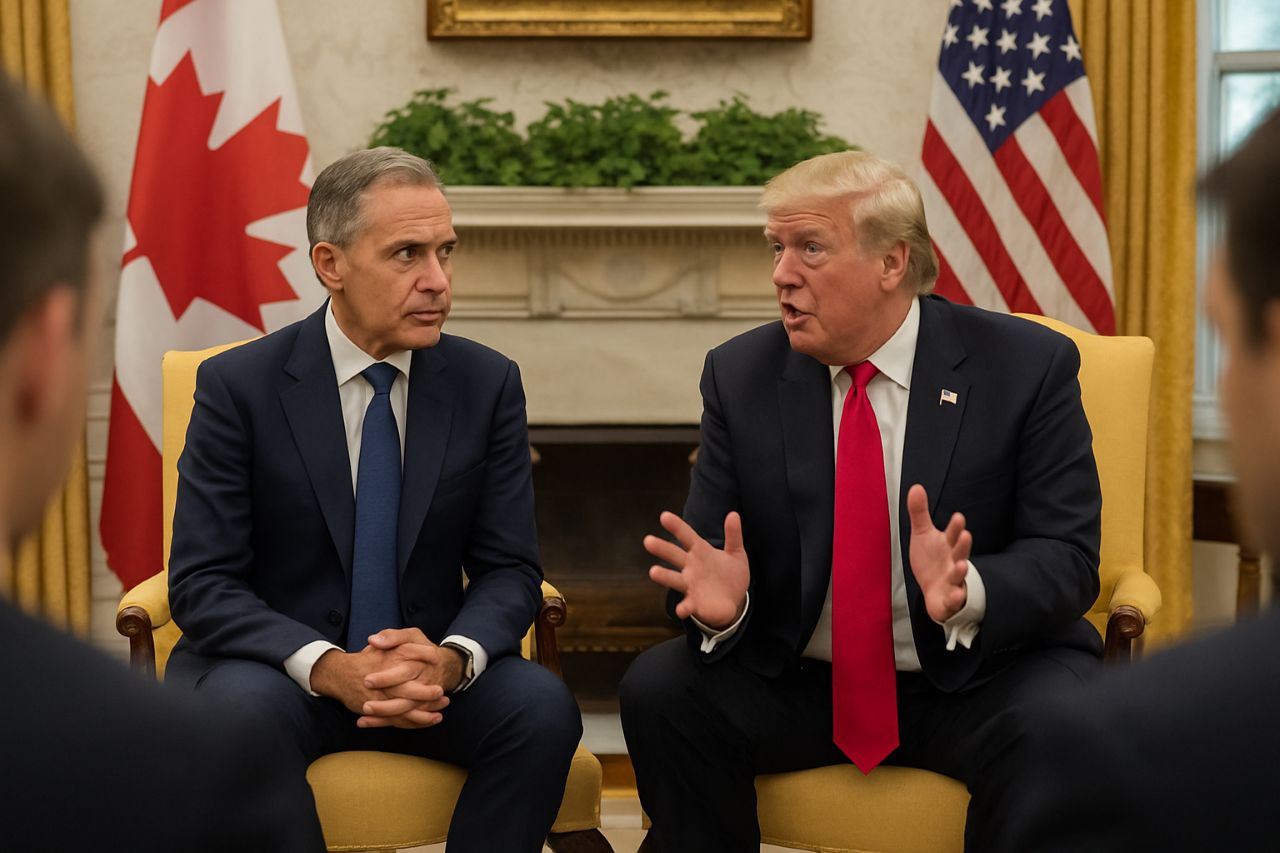
A High-Stakes Introduction in Washington
It’s not every day that a newly minted prime minister finds himself in the Oval Office, staring down a U.S. president who’s spent months musing about annexing your country.
But that’s exactly where Mark Carney, Canada’s freshly elected leader, landed today. The stakes? Nothing less than the future of North America’s most important bilateral relationship, a tangle of tariffs, and the surreal specter of Canada as America’s “51st state.”
I watched the live coverage with a mix of fascination and dread. The handshake between Carney and President Trump was cordial, but the tension was unmistakable—like two poker players sizing each other up before the first hand is dealt. Carney, a former central banker with a reputation for cool precision, was stepping into a room where unpredictability is the only constant.
The “Not for Sale” Moment
The meeting’s most memorable exchange came early. Trump, true to form, floated the idea of Canada joining the U.S. as a state—a line he’s used before, half-joking, half-menacing. Carney’s response was swift and unequivocal: “It’s not for sale, won’t be for sale ever.” The phrase landed with the weight of a closing gavel. Trump, perhaps sensing the moment’s gravity, let it slide with a “never say never,” but the message was clear: Canada’s sovereignty is not up for negotiation.
This wasn’t just political theater. For months, Trump’s tariffs on Canadian goods—steel, aluminum, even cars—have battered the Canadian economy and soured public opinion north of the border. Carney, who campaigned on standing up to Trump, had to deliver a message that would resonate back home. In that moment, he did.
Tariffs, Trade, and Tough Talk
The substance of the meeting, as expected, revolved around trade. Trump, in a pre-meeting social media post, repeated his claim that the U.S. “subsidizes” Canada by $200 billion a year—a figure economists on both sides of the border dismiss as fantasy. In the Oval Office, he doubled down, insisting that the U.S. doesn’t need Canadian cars, energy, or lumber. “We want to make our own cars. We don’t really want cars from Canada,” he said, as Carney looked on, stone-faced.
Carney, for his part, pushed back on the tariffs, arguing that they hurt both economies and undermine the spirit of the USMCA, the North American trade pact Trump himself once called a “transitional step.” There was no breakthrough—Trump made it clear he has no plans to lift the tariffs—but the conversation was, by all accounts, civil. That alone counts as progress in the current climate.
Personalities and Politics
What struck me most was the dynamic between the two men. Trump, ever the showman, dominated the airtime, veering off-topic and tossing out barbs at Carney’s predecessor, Justin Trudeau, and former finance minister Chrystia Freeland. Carney, in contrast, spoke sparingly but with purpose, emphasizing shared interests—border security, the Arctic, even the need to end the war in Ukraine.
Observers noted the absence of personal animosity, a small miracle given the recent history. “Very encouraging was the rapport today between Mark Carney and Donald Trump,” wrote one Canadian columnist. “Mr. Trump was respectful of Mr. Carney. He knows he’s dealing with a serious player.” That’s not nothing. In the world of international diplomacy, personal relationships can make or break deals.
The Road Ahead
After the public remarks, the two leaders retreated for a private working lunch, flanked by advisers and ministers. No one expected a grand bargain to emerge, but the hope was for a reset—a chance to lower the temperature and find common ground. Carney, ever the pragmatist, acknowledged that the real work would take time and extend well beyond trade.
As I watched the coverage, I couldn’t help but recall a conversation I had years ago with a Canadian diplomat. “The U.S.-Canada relationship is like a marriage,” he said. “You can’t get divorced, so you’d better find a way to get along.” Today, Carney and Trump took the first, awkward steps toward that goal. The issues—tariffs, trade, sovereignty—aren’t going away. But for now, at least, the lines of communication are open.
